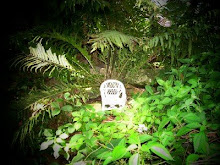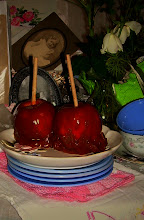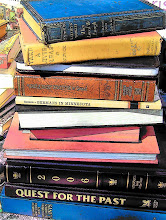Bei Erdarbeiten, beim Anlegen von Beeten oder beim Ausheben von Pflanzlöchern für Bäume und Sträucher oder bei Neubauten stoßt man hin und wieder auf Scherben von gebranntem Ton. Zeugen der Vergangenheit, Siedlungsfunde oder Abladestätte eines Töpfers, der z. B. dort, wo er Tonerde abbaute, die entstandene Grube mit Scherben zerbrochener Tonkrüge u. dergl. mehr zuschüttete?
Die Töpferei betrieb man in Dahlenburg wohl seit Jahrhunderten. Vorwiegend stellte man Gebrauchsgegenstände wie Töpfe, Teller, Tassen, Schalen und Vasen her.
Nur wenige Vertreter dieses uralten Handwerks verzeichnete das Bürgerbuch, wie Christg. Heuer [1788], Jurg. Heinr. Schulz [1816], Joseph Metscher [1832], Wilhelm Treel [1834], so daß anzunehmen ist, dass nur eine Töpferei bzw. 2 Töpferwerkstätten in Dahlenburg vorhanden waren.
Am 19 Januar 1862 Kaufte Töpfermeister Wilhelm Dietrich, geboren 1833 in Wörlitz, die Anbaubürgerstelle Nr.48 von Tweele, nachdem er in den "Hannoverschen Unterhanenverband" aufgenommen und aus dem sächsischen entlassen worden war. Am 2 Mai 1862 legte er den Bürgereid ab und im Juni heiratete er. Sohn Richard erlernte das Handwerk und wurde zusätzlich Ofensetzer wie sein jüngerer Bruder Carl der 1908 den Bürgereid leistete. Richard ehelichte 1897 Friederike Ulrich, eine Bürgertochter. In seiner Werkstatt formte er noch wie sein Vater auf der Töpferscheibe Vasen und Töpfe, die er glasierte und im eigenen Ofen brannte. Sein sohn Hans übernahm 1939 den Handwerksbetrieb und spezialisierte sich darauf, Öfen zu setzen. Nach dem Kriege begann ein Bauboom, und das Verlegen von Industriekachein für Badezimmer, Küchen, Flure und Werkräume, spielte eine neue Rolle in diesem Handwerkszweig, so dass Sohn Claus seine Ausbildung in den Bereichen absolvierte und die Meisterprüfung,ablegte. Nach dem Tode seines Vaters 1965 übernahm er die Werkstatt und modernisierte sie Töpferei im eigentlichen Sinne, an der Töpferscheibe betrieben, führt seit 1986 Marion Jahn in Dahlenburg aus.
.........
I am using some of the original phrases translated by Google and Babel fish. If I understood it better, I suppose I could use my own words entirely, but that's not the case. I also added a tiny bit of information. [] So here it is.
When the soil is disturbed shards of clay pottery pieces of broken glass, as if burned clay / tone, as if witness of past settlement, or Abladestätte finds could be found in the Dahlenburg area. The pottery is operating in Dahl citadel for centuries. Mostly one manufactured commodities such as pots, plates, cups, bowls and vases.
Only a few of these ancient people saw the book as Christgen Heuer [1788], Jurg. Heinr. Schulz [1816], Joseph Metscher [1832], Wilhelm Treel [1834], so it is assumed that is that only one or 2 pottery pottery workshops in Dahlenburg were present.
--On January 19, 1862 Purchased potters Wilhelm DIETRICH, born 1833 in Wörlitz, the cultivation of civil authority No.48 Tweel, after being in the "Hannover Unterhanenverband" recorded and released from the Saxon. On May 2, 1862, he presented the oath of citizenship, and in June he married [ Dorothea Sophie Wilhelmine E. OTT. ]
--Richard DIETRICH, the son learned the trade and was also stove-makers like his younger brother Carl in 1908 provided the oath of citizenship. [Carl married Friederike Karoline Johanne BEULSHAUSEN. In 1899 He died @ Wangelnstedt ]
Richard [*1874 - + 1939] married in 1897 Fred Ulrich, a citizens daughter [ Sophie Dorothea Elis. Friederike UIlrich ]
In his workshop, he formed yet, like his father on the potter's wheel, vases and pots, glazed and he was burning in your own oven. [?}
--His son Hans [*1901 - + 1965 @ Bad Bevensen ] took over the 1939 Workshop and specialized himself to share ovens. After the war began a building boom, and the laying of Industriekachein for bathrooms, kitchens, hallways and work areas, played a new role in this trade branch, so that his son Claus training in the fields completed and the master's exam, took off.
-- After the death of his father in 1965 Claus took over the workshop and modernized it operated pottery in the true sense of the potter's wheel, out since 1986 in Marion Jahn Dahlenburg. [ Because of privacy issues Hans wife and his children are not mentioned. ]
- Babel fish translation-
---[With earthwork, when putting on patches or when digging Pflanzlöchern for trees and bushes or with new buildings discover one now and then pieces of broken glass of burned clay/tone. Witness to the past, settlement finds or unloading place of a Töpfers, who e.g., does where he reduced alumina, which filled up developed pit with pieces of broken glass of broken Tonkrüge and such more? One probably operated the pottery in Dahlenburg for centuries. One predominantly manufactured utensils such as pots, plates, cups, bowls and vases. Only the citizen book registered few representatives of this age-old handicraft, like Christg. This year [1788], Jurg. Heinr. Schulz [1816], Joseph Met [1832], Wilhelm Treel [1834], so that it is to be assumed that only one pottery and/or 2 Töpferwerkstätten was present in Dahlenburg. On 19 January 1862 Töpfermeister Wilhelm Dietrich, born 1833 in Wörlitz, bought the cultivation citizen place Nr.48 von Tweele, after he " in; Hanoverian Unterhanenverband" taken up and from the Saxonian dismisses was. On May 1862 it put the citizen oath to 2 starting from and in June married it. Son Richard learned the handicraft and became additionally a furnace setter like his younger brother Carl of the 1908 the citizen oath carried out. Richard before-light 1897 Friederike Ulrich, a citizen daughter. In its workshop it formed still like its father on the Töpferscheibe vases and pots, which it glazed and in the own furnace burned. His son Hans undertook 1939 the crafts enterprise and specialized to set furnaces. After that a Baubooom, and played moving Industriekachein for bathrooms, kitchens, corridors and Werkräume began wars, a new role in this Handwerkszweig, so that son Claus put his training down in the ranges completed and the mastership examination. After the death of its father 1965 he took over the workshop and modernized her pottery in the actual sense, at which Töpferscheibe operated, implements since 1986 Marion Jahn in Dahlenburg.]
More in the book on the surname Dietrich
-- On page 24 under title Ehrentafel - Die Schützen König der Vergangnen 162 Jahr.
Year 1920 - Entry number 26 - R. Dietrich Töpfermeister.One entry 1880 for a Fritz Ulrich who is listed as a Sattler. pp.246.
--On page 67 r. Dietrich and C. Dietrich year 1933 - Buergermeister ratsherr Vorsteher
But there is a Rud. Dietrich also.? He is mentioned for years of 1935 and 1944.
--On page 259 - Christian Heuer in 1788 an old family of Dahlenburg His occupation is Töpfer. Heuer name in many variations is one of the Oldest families in Dahlenburg area. Ulrich is mentioned also with year 1835.
--On page 261 Hans Dietrich is mentioned in Dahlenburg 1931
..............................
Source : Book -- Charlotte Wodaege: Dahleburg Streifzuege durch die Geschichte.
Herausgeber: Museumsverein Dahlenburg 1989. PP.124 [Article 2.2.5.] sub title :Töpfer
Gesamtherstellung: Bruckerei Peter Schlueter, ortsteil Gienau, 2121 Dahlenburg in Zusammenarbeit mit der Samtgemeindeverwaltung Dahlenburg.













